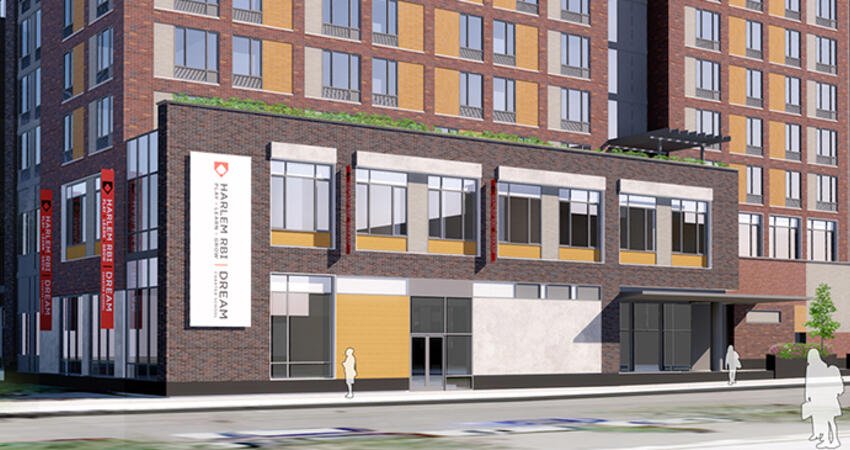
For-Profit Affordable Housing Developers Mesh Mission and Market
For decades, New York City’s tony Upper East Side has come to a hard stop at 96th Street, even on the plush Park and Madison avenues. There, canopied buildings with gargoyles and doormen begin to give way to a different sort of distinctive building—large-scale public housing projects.
The developments are rarely aligned with the existing street grid and show few signs of care, particularly as time passes and their capital needs grow. These developments, which represent some of the worst-designed affordable housing in the United States, offered their residents affordability but little else in a neighborhood providing few prospects for work or other productive engagements.
But as housing design and community developments have evolved across the country—with features such as parks, bike paths, and easier access to transit, all available for a premium price—mission-oriented developers have been blending design and affordability to create great places, even for low-income residents. Many of these health-promoting, affordable developments are being built by for-profit developers or through partnerships between for-profit and nonprofit entities.
Blending mission and profit is possible, the developers say, albeit with less return than available from high-end buildings. A few developers, such as New York City-based Jonathan Rose Companies (JRCo) and St. Louis-based McCormack Baron Salazar, start with a mission-driven approach to create vibrant communities that give more people a safe and engaging place to call home—and then make sure that the developments also fit with their profit motivation.
Communities of Opportunity
Jonathan Rose, principal of the real estate development company that bears his name, says the company was founded as a for-profit real estate company to create “communities of opportunity.”
To reach that goal, the company seeks opportunities that offer benefits for all—benefits that include affordable housing, environmental responsibility, and cultural, health, and education infrastructures. The approach involves finding a nonprofit development partner with ties to the community and identifying needed services that also support the project’s bottom line.
Schools and health centers, which often bring public funding, can serve important roles in the developments, while after-school programs run by nonprofit groups, also typically paying rent, serve another mission-driven purpose. Rose says the firm’s model helps improve the sustainability of the neighborhood while increasing profits.
In July, JRCo will open the East Harlem Center for Living & Learning at Washington Houses in New York City, eight blocks north of 96th Street. The multifamily, mixed-use development, built in partnership with several New York City agencies and the nonprofit group Harlem RBI (Returning Baseball to the Inner City), includes 89 affordable housing units, a new charter school offering kindergarten through eighth grade, and office space for nonprofit organizations.
The apartments have wide, high windows and offer magnificent views of New York’s East River and beyond. Hallways are lighted with wall sconces at short intervals, reflecting the cheery yellow of doorposts and leading the way to staircases enclosed in walls of windows, designed for safety and to increase their use by residents.
Several rooms are set aside for tenant use, free of charge, and include a computer room, a room with exercise equipment, and a lounge that will include a widescreen television and a kitchen. Space is allocated for use by a part-time social services coordinator, with financial literacy training topping the list of assistance to be provided to residents.
The building abuts the charter school, which has a large gym that tenants can use during non-school hours. A publicly accessible park will sport flowers and benches. As is common for JRCo properties, the site is easily accessible by public transportation.
Though the apartments are designated for households earning less than 60 percent of the area median income—in this area, $49,000 for a family of four—everything about the building means it could easily be mistaken for a market-rate project.
A Holistic Approach
McCormack Baron Salazar operates on a different model than that of JRCo, but the goal is similar: creating a place to call home for the many people priced out of the standard market. Rather than partner with community-based nonprofits, the firm in the 1970s created its own nonprofit arm, Urban Strategies. The two entities work hand-in-hand to establish housing developments that include services such as daycare centers and community centers. Community input is part of their equation.
Two years ago, the U.S. Department of Housing and Urban Development (HUD) awarded McCormack Baron Salazar with Choice Neighborhood Implementation grants for affordable housing projects in Pittsburgh and Columbus, Ohio. The grants are intended to “ address struggling neighborhoods with distressed public or HUD-assisted housing through a comprehensive approach to neighborhood transformation,” according to HUD’s Choice Neighborhoods website. The program’s approach links improvements in housing and other neighborhood services.
“Historically, revitalization efforts have worked in silos, trying to address housing, jobs, education, crime and safety, and human capital development independently,” says Sandra Moore, president of Urban Strategies. “These two Choice plans take a holistic approach to community transformation and will result in safe, stable, attractive neighborhoods for people from all walks of life.”
Richard Baron, a founder of McCormack Baron Salazar, says these grants are indispensable, and future projects will suffer without more local and federal funding. He hopes that the efforts of the grantees will bring attention to neighborhood problems and offer solutions. As a result, he envisions that more action—and money—will follow.
“Perhaps the recent riots in Baltimore will trigger Congress to understand that a lot of these issues are linked to neglect and a lack of resources in these communities, such as poor schools and few safe, affordable, and vibrant places to live,” Baron says.
Rendering of East Harlem Center for Living and Learning, courtesy of Jonathan Rose Companies


